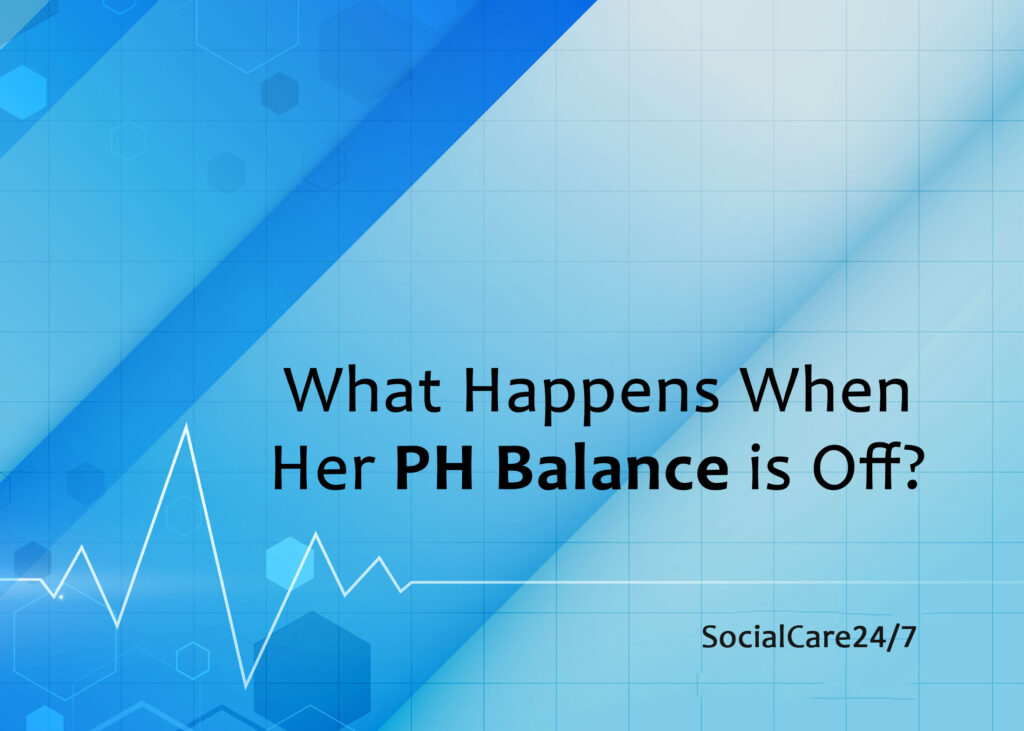Keeping PH levels regular is essential for women’s health, especially vaginal health. Since the vagina is acidic, it must be in a precise PH balance to prevent infections and viruses. Disrupting this balance can cause several uncomfortable and potentially dangerous health consequences. Why vaginal PH matters and what happens when it’s off. This will help women stay healthy.
In this article, we discuss what is PH imbalance, what happens when her PH balance is off, if it harms your health and how can you avoid it.
The Importance of PH Balance
The charge of hydrogen ions in a liquid determines its PH. PH is 0–14, with 7 in the middle. Anything below seven is acidic; anything beyond seven is neutral. Usually falling between 3.8 and 4.5, vaginal PH is just moderately acidic. Particularly for Lactobacillus, the vagina has to be acidic to stop dangerous bacteria from multiplying and encourage good ones. It preserves vaginal health.
Vaginal PH outside this range can upset the body’s homeostasis. Poor health, infections, and agony can result. Healthy vaginal PH is essential for sexual wellness.
Common Causes of PH Imbalance
Several things affect vaginal PH balance. These can include lifestyle choices and health issues. Knowing how PH shifts occur helps treat and prevent them.
Antibiotics: Antibiotics may change your vaginal flora without your understanding during an infection. Overgrowth of yeast or Gardnerella can cause bacterial vaginosis. These medications kill beneficial and dangerous microorganisms.
Menstrual Cycle: Hormones modify vaginal PH throughout your menstruation. A bleeding woman has a normal PH. It may aid yeast growth. At other times of the cycle, including ovulation, estrogen levels rise. This may temporarily alter vaginal conditions.
Sexual Activity: Sex introduces new molecules that modify vaginal acidity. Semen, with a PH of 7.2 to 8, can temporarily neutralize the acidic vaginal environment. This may alter vaginal PH, increasing infection risk.
Douching and Hygiene Products: Smelly douches or soaps can disturb vaginal bacteria equilibrium. These things can reduce healthy bacteria in the vagina, add unpleasant chemicals, and affect PH, making illness and pain more likely.
Food plan: A woman’s diet can significantly alter vaginal PH. Sugary foods promote yeast growth. However, a diet rich in fruits, vegetables, and microorganisms may help maintain vaginal PH. Too much alcohol or coffee might worsen imbalances.
Symptoms of an Imbalanced PH
A vaginal PH imbalance can produce a lot of symptoms. Sure, these symptoms could point to a significant illness. It is imperative to seek medical assistance right away, knowing these signs.
Unusual Discharge: Vaginal fluid imbalance is one of the most apparent PH imbalance symptoms. Depending on the ailment, pus may be varied colours, shapes, or smells. Bacterial vaginosis discharge smells and looks like fish. Yeast infections cause thick, white, pus-like cottage cheese.
Itching and irritation: Women may feel scorching or soreness around the vulva or vagina when PH is wrong. Too many harmful bacteria or yeast may cause this pain. Swelling and soreness may result.
Discomfort During Intercourse; Sexual activity might cause pain in a woman with low PH. Dry, inflamed, or swollen vaginal tissue can affect PH balance. It can harm a woman’s life and sexuality.
Frequent Urinary Tract Infections: Unbalanced vaginal environments increase urinary tract infections. Where PH swings from acidic to basic, harmful microorganisms may flourish. These viruses can enter your urinary system through your vagina. This is why UTIs are common.
The Health Implications of an Unbalanced PH
Vaginal PH imbalance can cause more than pain. Poor PH can cause long-term health issues.
BV (bacterial vaginosis): BV is a frequent response to PH imbalance. It occurs when vaginal PH changes and harmful microorganisms are present. Some women experience no symptoms, while others have smelly, itchy, and painful discharge. BV may increase the risk of STIs and early delivery because they have BV.
Yeast Infections: Incorrect PH might cause vaginal yeast growth. These can induce yeast infections. Itching, burning, and thick white fluid are symptoms. Antibiotics, high-sugar diets, and other factors can affect vaginal microbes.
Increased Risk of STIs: Changes in vaginal PH may weaken STD-preventing walls. This makes bacterial vaginosis women more susceptible to gonorrhea and chlamydia.
How to maintain vaginal PH
Change your life to maintain sexual health and avoid PH concerns. These tips can help women maintain their PH balance levels:
Do not scrub or use harsh soaps: Douching and using harsh, scented soaps can harm vaginal microorganisms. Douching can wash away healthy microorganisms and spread infections. Otherwise, avoid these unless your doctor advises you.
Choose gentle soaps and towels: Using odourless toilet items helps maintain the vagina’s acidity. It’s better to use fragrance-free products because strong chemicals might irritate vaginal tissues.
Consuming extra probiotics helps: The vagina can grow good bacteria with probiotics. Probiotic-rich sauerkraut, yogurt, and kefir help maintain the correct vaginal flora composition.
Drink plenty of fluids and eat healthy: Vitamin-rich foods and plenty of water are essential for your overall health, including your vaginal area. Eat well to balance hormones and maintain PH levels.
Also Check: Ehlers-Danlos Syndrome
Conclusion
A woman’s vaginal PH imbalance can cause pain and health complications. If they understand PH balance, what disrupts it, and how to avoid it, women can maintain vaginal health. Women may prevent PH imbalances and stay healthy by being proactive and adopting sensible lifestyle choices.
Source Links;
https://www.healthline.com/health/womens-health/vaginal-ph-balance
https://www.bannerhealth.com/healthcareblog/better-me/should-you-be-worried-about-your-vaginal-ph
https://www.drdanielkushner.com/blog/vaginal-health-what-causes-ph-imbalance



